Évora, World Heritage Site
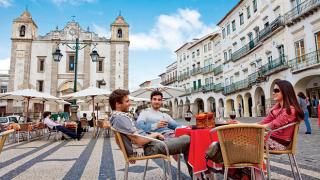
Don't miss
- take a photo at the Roman Temple
- wander about the streets and discover the city
- eat an ice cream at the Praça do Giraldo
- buy a handcrafted article
- visit the Chapel of Bones, in Church of São Francisco
Évora, a book of Portuguese art history.
The best way to see the city is on foot, walking through its narrow streets lined with white houses, discovering along the way the monuments and details that reveal the history of Évora and its rich heritage.
Judging by the calm, welcoming surroundings, one easily sees why this city, which dates from the Roman era, was chosen by the kings of Portugal in the 15th century to serve as their residence, a fact that contributed to its development and cultural importance in the following centuries. It was in fact due to Évora´s long history and its urban centre, typical of the 16th to 18th centuries, that has been preserved to our days that lead UNESCO to classify the city as a World Heritage site.
Our starting point: the Praça do Giraldo
Located in the heart of the city, this square is an excellent meeting point, with coffee shops, sidewalk cafés, shops and a tourist information office. On one side is the Church of Santo Antão and the marble drinking fountain (Chafariz) with 8 spouts, representing the 8 streets that lead here.
Suggested itinerary
Starting from the arches of Praça do Giraldo, make your first trip through the main points of interest: the Temple and the Roman baths, the medieval walls, the Cathedral, the Graça Church and São Francisco Church, with its curious Chapel of Bones (Capela dos Ossos).
If you have time, don’t leave out the Museum of Évora, the Eugénio de Almeida Foundation, and the old University, founded in the 16th century and one of the reasons for the young, relaxed spirit we find in Évora. It is also worth your while to walk through the romantic Garden of the Palace of D. Manuel and visit the Ermida de São Brás chapel, outside the city walls.
Whether your visit is cultural or you simply want to enjoy a calm weekend, Évora is an inspiring city with a lot to offer. Outside the city, by taking the secondary roads, you will be able to better appreciate the landscape of the Alentejo. If you're interested in archaeology, take EN114 in the direction of Guadalupe and in 3 km you will come upon Cromeleque dos Almendres, the largest megalith of the Iberian Peninsula. These 95 monoliths are thousands of years old and their purpose has not been discovered as yet.
The Cathedral spire and the Temple
These are the genuine landmarks of the city and are a must for the photo album. The Cathedral spire is easily recognised by its peculiar form, a combination of conical towers that are rare in Portuguese architecture. Located in the centre of the city, it serves as a good guide to see where you are. Did you know that the Cathedral of Évora is the largest medieval cathedral in Portugal?
Very close by, in the Conde Vila Flor square, stands the large Roman temple, a symbol of the emperor worship, which for many centuries was thought to be dedicated to the goddess Diana.


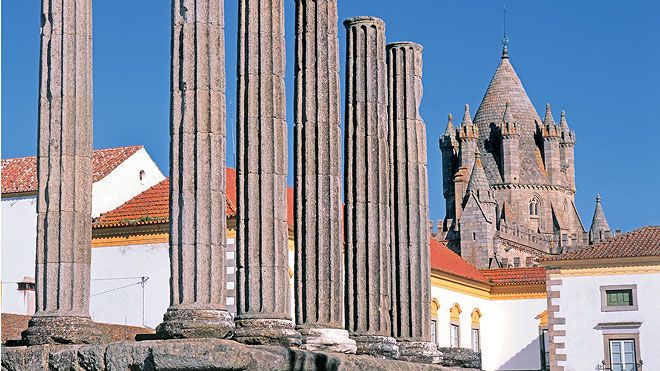





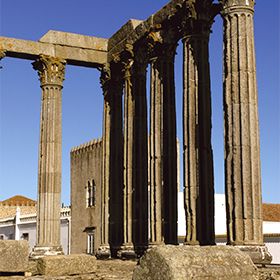

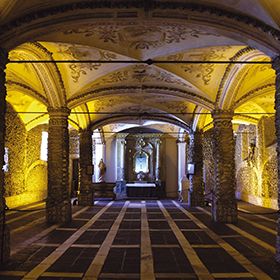

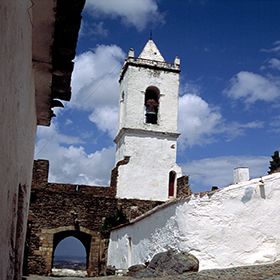
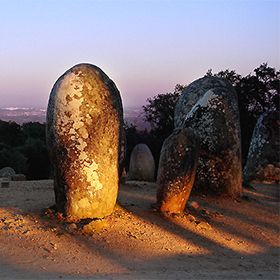



 Explore
Explore 
 Remember and Share
Remember and Share 


